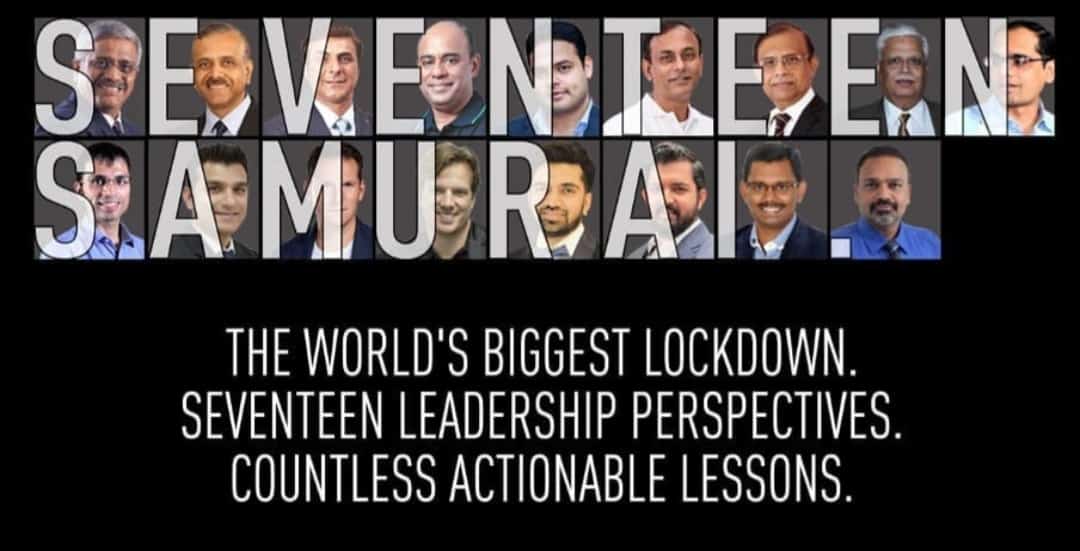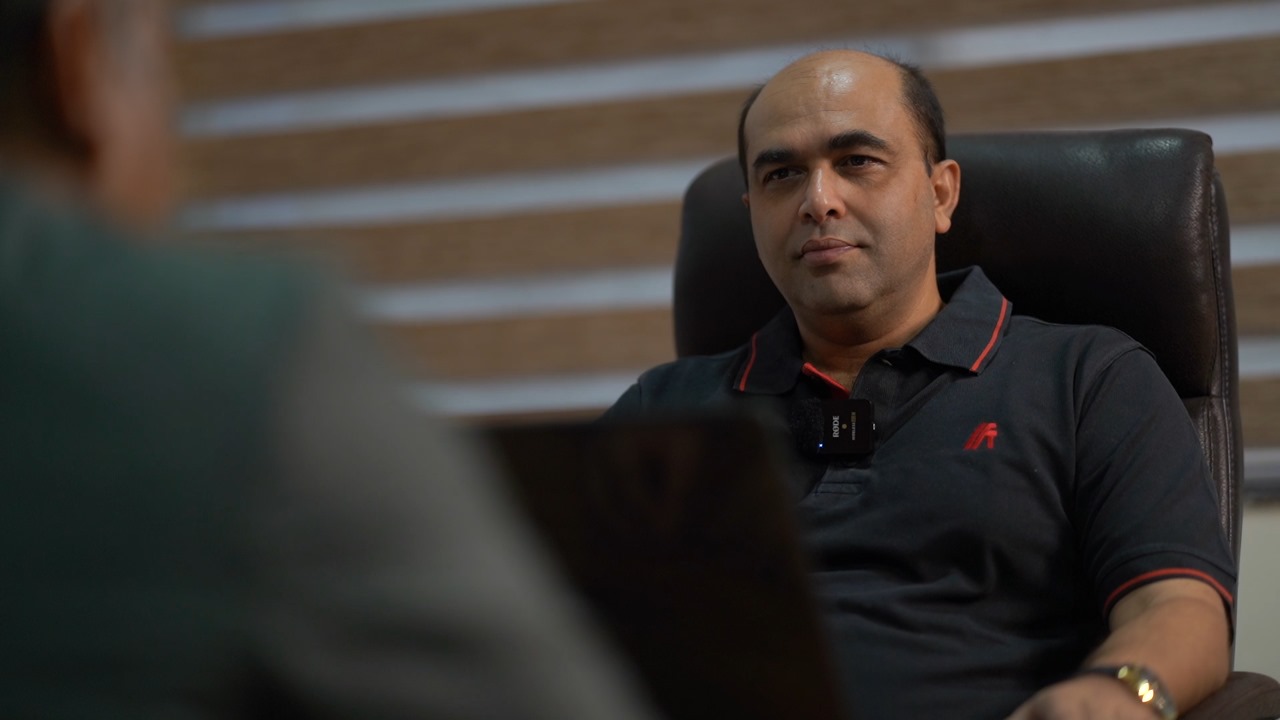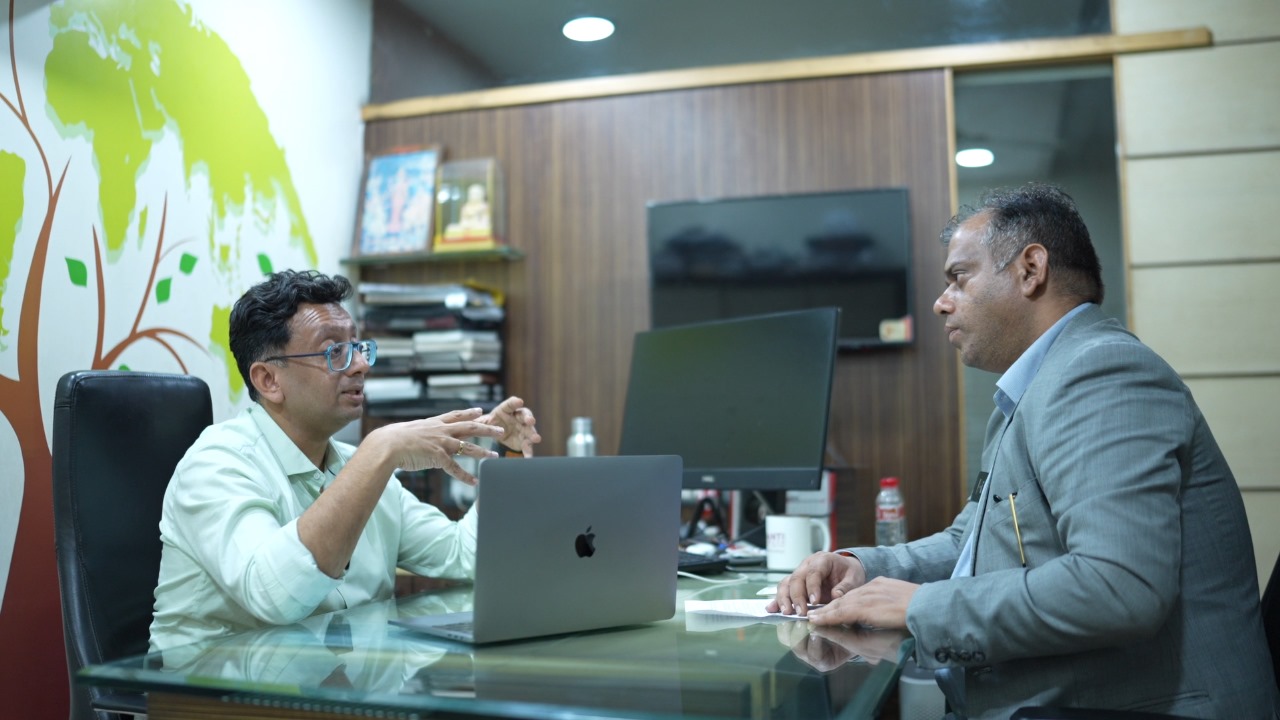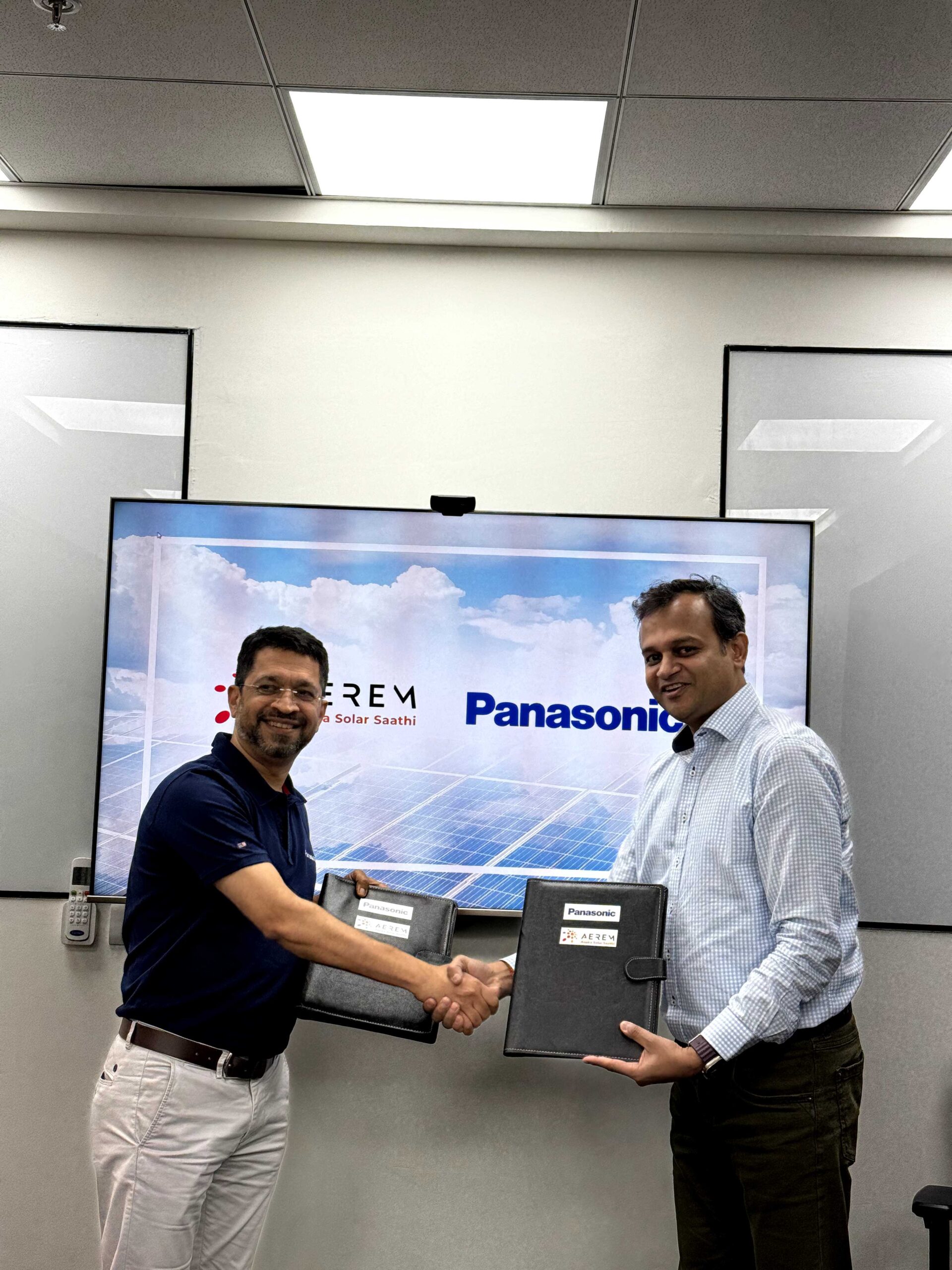We are all lagging behind China

It is not just skills but a host of factors behind China’s manufacturing leadership
INTERVIEW DATE: May 23, 2020
WHERE WERE WE: India’s Corona caseload had begun to spike at an alarming rate. In under four months since the first case was reported, the number of Covid-19 cases had crossed the one lakh mark. It was still low compared to the global numbers, which had passed 50 lakh with more than 60 percent in Europe and the US alone. But it was only a matter of time.
We were looking to speak to industry speakers from abroad, particularly from Europe or the US, regions that were facing the brunt of the impact, to share and learn coping and survival strategies for the crisis. This is where we had the opportunity of speaking with two well-known and experienced industry entrepreneurs and speakers from Austria, Clemens Kirner, Founder and Owner of INS Insider Navigation Systems GmbH; and Oliver Lorenz, President and CEO of SHANXAGENCY E.U. Presenting, edited excerpts
GLIMPSES
Clemens Kirner
- It is not feasible to move all the production back to the US or Europe because if you do that, an iPhone will cost you $2,000 and not $1,100.
- Among my first impressions of China’s industry was that most people did not speak English and there were problems with currency exchange, but that all worked out because of the fast improvements there in the infrastructure —connecting roads to ports and airports and all the production facilities for electronic devices in the industrial hubs like Shenzhen.
- Industry 4.0 provides high wage countries like those in Europe the possibility of bringing back production to Europe, because as long as you need, say, 20,000 workers in a factory, I guess it’s not really doable that you have factories in Austria.
- We are all lagging behind China. [Not just India] it’s the same everywhere. It is not just skills but a host of factors behind China’s manufacturing leadership.
Oliver Lorenz
- China’s local manufacturers have been closing the gap of quality of products between their products and those manufactured by reputed multinationals.
- Whether it is suppliers and manufacturers in India or China, everyone has to do their homework. You can’t just press a reset button [and become a manufacturing hub].
- A European company will also look at how a company presents itself, how the logo looks. They will look at the overall appearance of the building, how clean is the entrance area and the washroom, how the coffee is, how organized the factory is, how easy the walkthrough is, and how clean the surroundings are.
- There are these two terms that are flying around which I can’t [bear to] hear any more: one is ‘new normal’ and the other is ‘unprecedented’. These terms bring even more uncertainty to the minds of people.
- Also, this crisis makes it even harder to compare different economies because we all had to deal with it. Every individual, every family, every organization is dealing with it in their own way. Even in Europe, each country has a different approach to the crisis.
THE INTERVIEW
As a result of the trade war and Covid-19, are multinational companies shifting out of China?
Clemens Kirner (CK) : A lot of production processes are developed and patented in Europe but the production itself is outsourced to China. There might be some change in this approach now. For instance, we now have a project in Austria that has an Indian partner. We have always worked within Indian partners.
It is not feasible to move all the production back to the US or Europe because if you do that, an iPhone will cost you $2,000 and not $1,100.
Oliver Lorenz (OL): In many industries. China’s local manufacturers have been closing the gap of quality of products between their products and those manufactured by reputed multinationals. In my early days in Shanghai, around 2007, European SMEs set up their production site in China but they sent people from the headquarter over there to get the factory going [and produce the desirable quality]. In the last three or four years, that whole approach has changed because local competitors have kept coming up with competitive products and pricing. Look at the electric car industry, there are many China brands focusing on electric cars, and their decision making is extremely efficient. They decide that, say, all the buses in a city will have to be electric and it’s done within, say, a week. A southern Chinese city [Shenzhen] put something like twelve thousand buses on its roads within a week. Of course, they would have taken the time to manufacture these buses before putting them on the roads.
Similarly, when you look at the present crisis, in Europe there was a dependency in the beginning on the imports of masks from China, then companies here started to produce masks. Some dependency (on China) is still there because when you work in a medical field, you need suppliers who are certified, who have experience and expertise in making medical products.
Whether it is suppliers and manufacturers in India or China, everyone has to do their homework. You can’t just press a reset button [and become a manufacturing hub].
Indian local manufacturing companies who have clients overseas have to be a little bit patient right now because European companies have to first sort their own thing out right now. As an Indian local manufacturer you also have the time during this crisis to do your homework. Look at your factory, how to make it more presentable, can something be improved so that when one invites European clients or do a meeting by a zoom or any other electronic means, can we still do a virtual factory tour? Think about how to present one’s manufacturing capabilities as a great proposition for European customers.
Indian companies can do more to get a better response from European partners. You might be a local manufacturing company in India, you make excellent products, precise on time and this is all very important but the European companies look at other things too to form long-term partnerships.
A European company will also look at how a company presents itself, how the logo looks. They will look at the overall appearance of the building, how clean is the entrance area and the washroom, how the coffee is, how organized the factory is, how easy the walkthrough is, and how clean the surroundings are. How is the digital infrastructure in regards to industry 4.0 and IOT. Is it easy to drive in there by car or not?
During the next few weeks or months, Indian manufacturing companies can look at how they implement more digitalization in their factories. Now is the time where Indian manufacturing companies could take a step forward in this direction.
That insight is really helpful. However, I understand that China’s companies didn’t need to prove themselves as much to attract overseas investors that they did, in big numbers. What were the things that Chinese companies did in order to attract investors?
OL: There were a lot of government-funded industrial parks that came up in, for example, the Shanghai region. Similarly, there were cities and villages where industrial parks were built with connecting infrastructure to major industrial hubs. So there was a lot of official investment that went into supporting these developments. That’s why comparing India and China is very difficult as there are lots of differences and we’re not going to go into details, otherwise we’re going to sit here forever but the important thing is India has improved a lot.
I’ve been traveling to India since 2007. My first trip to India was to an IMTEX exhibition in Bangalore in January 2007. I had taken up a booth space there. The exhibition building was still under construction. Now when you look at the BIEC (Bangalore International Exhibition Centre) it’s a beautiful building and the whole surrounding is nice and it’s location is very-well thought of [in terms of its distance from the business centres and the airport]. Over the last ten to fifteen years, there have been huge improvements in India [in terms of infrastructure].
CK: My experience is very much aligned with what Oliver said. Among my first impressions of China’s industry was that most people did not speak English and there were problems with currency exchange, but that all worked out because of the fast improvements there in the infrastructure —connecting roads to ports and airports and all the production facilities for electronic devices in the industrial hubs like Shenzhen.
Also, the decision making is faster, unlike in India, France or Germany, where, if we put aside, say, a global investment fund, then different countries will all have their own inputs and different ways of doing things, and by the time the decisions are made, that opportunity may have passed.
How is the situation on the ground in Europe, and Austria in particular?
CK: Most economies are opening up, except for restrictions on places of gatherings like restaurants and nightclubs, etc. The problem is I guess the demand is not there. It’s a little bit better but people don’t go out that much anymore.
Some manufacturers had closed the factory because due to Corona they were not able to get supplies, from Italy, for instance. Now some of them have opened up again but only partly because demand went down by 70 percent and people are concerned about what happens if there is a second wave. So the main problems as we see right now, are not only that we can’t open everything again but that there is also a missing trust in the future.
OL: We’re all looking forward to everything going back to normal. But what will this new normal be. There are these two terms that are flying around which I can’t [bear to] hear any more: one is ‘new normal’ and the other is ‘unprecedented’. These terms bring even more uncertainty to the minds of people.
Also, this crisis makes it even harder to compare different economies because we all had to deal with it. Every individual, every family, every organization is dealing with it in their own way. Even in Europe, each country has a different approach to the crisis. So I think now comparing India with China, or India with Europe, or Europe with China work even less than before because it’s now important to say that, okay, let’s get through this crisis first. Let’s restart and think about what our company can do in the future. How we can make sure that our employees can get more satisfaction and stability at work. How we can become more productive, and be more ready for the future.
The only thing we can control is our own surroundings; that’s what we can influence.
Audience Question: Will the whole approach to industry 4.0 change because of the pandemic?
CK: Industry 4.0 provides high wage countries like those in Europe the possibility of bringing back production to Europe, because as long as you need, say, 20,000 workers in a factory, I guess it’s not really doable that you have factories in Austria.
On the other hand, we [increasingly] have many regulations that need to be followed, and rightly so. Data protection regulations justifiably prohibit the processing of clients’ data in the cloud and for the same reason, one can’t use predictive models. Then one is not allowed to see if the staff is working or not working, as the unions forbid it. So industry 4.0 is very important but then again, it will have to evolve with all these limitations in view. That also means that companies in Europe are not able to use all of the possibilities compared to those in China.
A lot of trade shows have been cancelled. What could be the strategy for manufacturers to stay on track as far as their marketing is concerned?
OL: Among the trade shows, I am definitely looking forward to the next IMTEX. I have always loved this trade show hosted in Bangalore and in Mumbai as well. These are always special experiences as you have great interactions with great people. Today, the face of your company is your website. Every company has to do a critical analysis on a regular basis of your website, get feedback from your colleagues, especially from people overseas and think of how you can improve that.
You should also look at how well-known your brand and products are in India and abroad. This crisis is the time to ask these questions.
Audience question: Despite us having such highly skilled people, why are we still lagging behind China (in manufacturing)?
CK: We are all lagging behind China. [Not just India] it’s the same everywhere. It is not just skills but a host of factors behind China’s manufacturing leadership [see earlier answers].
OL: Use the advantages that India has. You speak English which is the global business language. You have online tools that work. For example, a huge difference that India has is that international payments are quite simple to do with all other countries. I remember that it was not easy to do international transfers from China. That’s why many countries have a Hong Kong bank account.
When you say that you want to invite or partner with European customers, then look critically at your website, get testimonials from your international clients, saying that they have worked with you to their satisfaction of service and product quality. Promote that on your LinkedIn account. When they virtually want to visit you or in a few months physically visit you, make sure your building looks good and make sure your factory looks even nicer than it is now. And all these improvements are shown in AR (Augmented Reality) when you do a walkthrough.
Industry Samurai: Executive Profiles
Clemens Kirner
Clemens Kirner is the founder and owner of INS Insider Navigation Systems GmbH established 2014 in Vienna, but acting globally, as a specialist of hardware-free, centimeter precise Augmented Reality (AR) Indoor-Navigation and Indoor Experience without the need of extra Infrastructure like GPS or Beacons.
Further, INS Insider Navigation Systems GmbH is specialist in Augmented Reality Visualization of Company Data coming from existing CRM/ERP and other Information Management Systems to Visualize Real-time Data in a Live Camera captured environment. Insider Navigation Solution can be used to optimize Routes in Large Scale Factories, Venues, Airports etc, but can be also used for the Visualization of BIM-Systems (Building Information Management), Order-picking, Logistics etc.
Previously, Mr. Kirner was the founder and owner of the company innovation.rocks consulting GmbH, which was established 2003 in Vienna with branch offices in Munich Shanghai and Hong Kong. In 2017 Clemens Kirner sold innovation.rocks to a private equity successfully and now focuses solely on INS.
Mr. Kirner holds lectures at the New York University, Technical University of Vienna and is a regular speaker and exhibitor at important Trade Fairs and Marketing Events worldwide – from AWE in Santa Clara/USA, Euroforum in Cologne/Germany or Hannover Fair, one of the largest industry events globally.
Oliver Lorenz
Oliver Lorenz is the founder of SHANXAGENCY e.U. and acts as its President & CEO. SHANXAGENCY specializes in helping European based manufacturing SMEs to find the fitting marketing and advertising partner in Asia and will as a next step help Asian manufacturing SMEs to find the fitting marketing and advertising partner in Europe. Through his extensive experience of almost 15 years in various senior management roles in the B2B marketing and advertising industry in Asia, Oliver has the ability to carefully brief, select and train advertising agencies to the level that each manufacturing company expects their agencies to act.
Previously, Oliver was working as the CEO Asia of Montfort Advertising, a leading Europe based globally acting B2B Marketing and Advertising agency. He fulfilled this role for almost 15 years and helped brands like DMG MORI, KUKA, TLD, VOITH Paper and many others to strengthen their brand and promote their products in Asia. In addition, he acted as Board Director of Montfort Advertising’s Tokyo office.
Besides his role as CEO Asia at Montfort Advertising, Oliver acted as the Head of Market Asia of ORDERFOX, a leading globally acting marketplace for the CNC-industry where he increased his know-how about the challenges and opportunities in the manufacturing industry in Asia.




